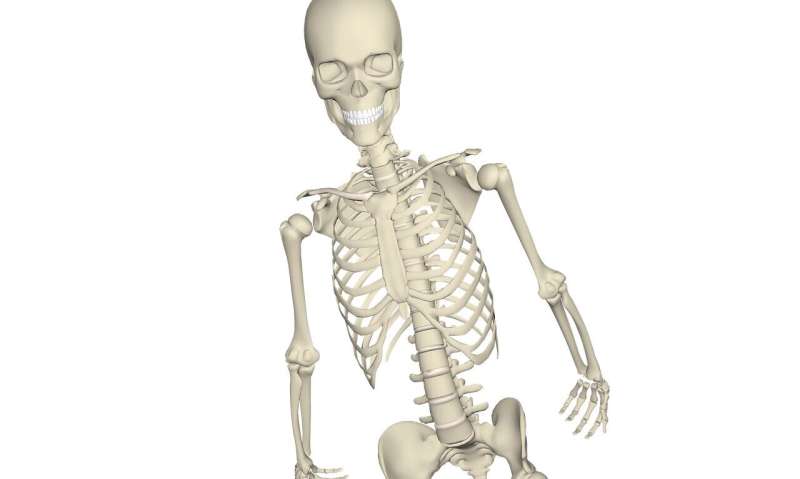Osteoarthritis biomarker could help cut $23 billion health bill

University of South Australia researchers are a step closer to finding a new biomarker for osteoarthritis, a painful condition which affects more than two million Australians and costs the country an estimated $23 billion a year.
Using new state-of-the-art imaging techniques to identify signs of osteoarthritis (OA), UniSA scientists are learning more about changes at the molecular level which indicate the severity of cartilage damage.
A study led by Ph.D. student Olivia Lee and her supervisor Associate Professor Paul Anderson using mass spectrometry imaging (MSI) has mapped complex sugars on OA cartilage, showing different sugars are associated with damaged tissue compared to healthy tissue.
The finding will potentially help overcome one of the main challenges of osteoarthritis research—identifying why cartilage degrades at different rates in the body.
"Despite its prevalence in the community, there is a lot about osteoarthritis that we don't understand," Prof Anderson says.
"It is one of the most common degenerative joint diseases, yet there are limited diagnostic tools, few treatment options and no cure."
Existing OA biomarkers are still largely focused on bodily fluids which are neither reliable nor sensitive enough to map all the changes in cartilage damage.
By understanding the biomolecular structure at the tissue level and how the joint tissues interact in the early stages of osteoarthritis, UniSA researchers say any molecular changes could be targeted to help slow the progression of the disease with appropriate medication or treatment.
Osteoarthritis affects an estimated 2.2 million Australians and more than 300 million people worldwide, with those aged over 45 most at risk. Being female, overweight, and having existing joint injuries increases the risk of getting OA.
In Australia, $3.75 million is spent on joint replacements alone for osteoarthritis patients each year, and other indirect costs related to lost work productivity and loss of wellbeing are estimated to be more than $23 billion a year.
In a recent paper published in the International Journal of Molecular Sciences, Lee and her colleagues from UniSA's Musculoskeletal Biology Research Laboratory and the Future Industries Institute explore how advances in mass spectrometry imaging (MSI) to detect OA are promising.
"To date, diagnosing osteoarthritis has relied heavily on X-rays or MRI, but these provide limited information and don't detect biomolecular changes that signal cartilage and bone abnormalities," Lee says.
"By contrast, alternative imaging methods such as MSI can identify specific molecules and organic compounds in the tissue section."
MSI has already demonstrated its strengths in identifying biomarkers for different types of cancer, and UniSA researchers are hopeful it can achieve the same for early diagnosis of osteoarthritis.
More information: Yea-Rin Lee et al. Mass Spectrometry Imaging as a Potential Tool to Investigate Human Osteoarthritis at the Tissue Level, International Journal of Molecular Sciences (2020). DOI: 10.3390/ijms21176414


















